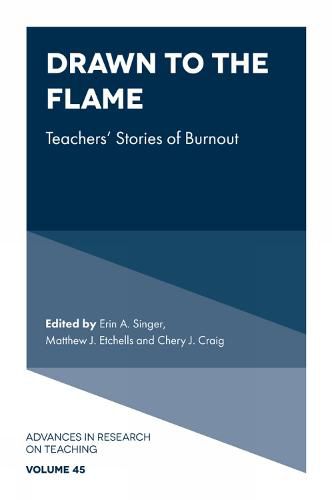Readings Newsletter
Become a Readings Member to make your shopping experience even easier.
Sign in or sign up for free!
You’re not far away from qualifying for FREE standard shipping within Australia
You’ve qualified for FREE standard shipping within Australia
The cart is loading…






Teacher attrition and burnout have been researched in school districts all over the country for several decades. Characterised by physical and psychological exhaustion, cynicism (as an interpersonal and emotional indication of built-up aggression), and a sense of helplessness and low self-efficacy, burnout can lead to anxiety, depression, diminished job performance, absenteeism, and attrition.
Drawn to the Flame investigates incidences of burnout and burnout avoidance among educators in both K-12 and higher education spheres during the COVID-19 pandemic - a period that saw an intensification and increased frequency of polarizing sociocultural and socio-political conditions, resulting in psychosocial and emotional strain among those invested in education. Through narrative inquiry, the chapters present the stories of teachers in a variety of settings (e.g. urban, suburban, rural) and sociological conditions (economic, racial, sex/gender), who experienced first-hand the impact of the pandemic and the chaotic transition to remote learning, the impact of the U.S. Immigration and Customs Enforcement (ICE) and racial strife, on students and curricular planning processes.
$9.00 standard shipping within Australia
FREE standard shipping within Australia for orders over $100.00
Express & International shipping calculated at checkout
Teacher attrition and burnout have been researched in school districts all over the country for several decades. Characterised by physical and psychological exhaustion, cynicism (as an interpersonal and emotional indication of built-up aggression), and a sense of helplessness and low self-efficacy, burnout can lead to anxiety, depression, diminished job performance, absenteeism, and attrition.
Drawn to the Flame investigates incidences of burnout and burnout avoidance among educators in both K-12 and higher education spheres during the COVID-19 pandemic - a period that saw an intensification and increased frequency of polarizing sociocultural and socio-political conditions, resulting in psychosocial and emotional strain among those invested in education. Through narrative inquiry, the chapters present the stories of teachers in a variety of settings (e.g. urban, suburban, rural) and sociological conditions (economic, racial, sex/gender), who experienced first-hand the impact of the pandemic and the chaotic transition to remote learning, the impact of the U.S. Immigration and Customs Enforcement (ICE) and racial strife, on students and curricular planning processes.